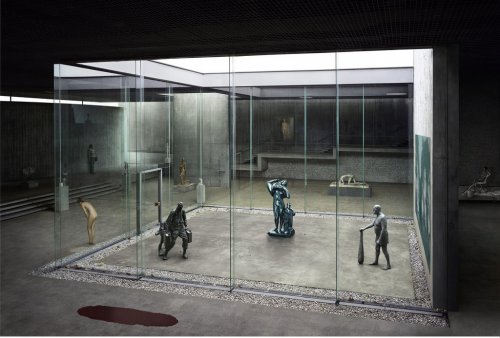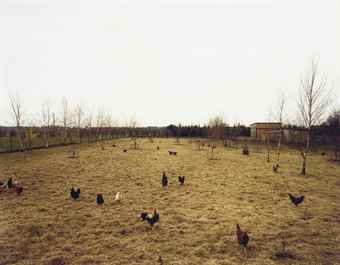In the 1990s on my way home from an afternoon in Chelsea, I
popped into what must have been Sean Kelly to see Marina Abramovic who was
living in the gallery for five days. It was an experience that I will never
forget as I found myself in a trance for two hours, building a relationship, so
I thought, with the artist, but really, as I recognized today at the Serpentine,
the relationship was with myself.
512 Hours at the
Serpentine Gallery is a big London event. Apparently there have been long lines
waiting to be with Marina over the past week, and it’s not just the British
love of queues that has them stand in the rain waiting hours. It is as though
the wait is part of the ritual of seeing and experiencing Abramovic these days.
I had heard that Abramovic had “lost it” and that this wasn’t such a great
performance. So when my friend wanted to visit the Saatchi Gallery instead, I
agreed. But then when the Saatchi Gallery was closed for a private event – as
only the Saatchi Gallery would be – we had no choice but to wander over to 512 Hours at the Serpentine. Fiction
number one in the reviews was exposed. There was no line: we walked straight
in, that is, after putting all our valuables, mainly technologies, in a locker.
As always I was enthralled. I can only describe being in
Abramovic’s presence as similar to being hypnotized, but I am not sure that’s
what it was. I was transported into a trance-like state, and had an out of body
experience through a form of deep meditation. I have been practicing meditation
for years, but am never very successful at it – I usually end up remember the
email I need to send, or needing to make a note of that call I forgot to return.
But when Abramovic took my hand and led me to a long platform, behind a row of
chairs looking out at the curtained windows of the Serpentine Gallery, I was
transformed into the perfect Buddhist. I stood on the platform motionless, not
even experiencing my body, completely transported into a meditative awareness. That
was until the woman Abramovic had placed next to me, left. I panicked. I felt
pulled away, and I was thrown into an emotional or spiritual turmoil: I didn’t
know what to do. Should I leave, should I stay, how do I know when to leave,
can I just rely on the gallery closing as a way of knowing my time had come?
And as I stood longer, the feeling of anxiety grew. I cannot say how long I
stood there because I had agreed to the contract with Abramovic by placing my
watch in the locker before entering the gallery. Though I couldn’t say how long
I was present, I did learn exactly how intense it is to be in the company of myself.
This is what makes Abramovic an artist: she creates an environment within which
she facilitates a new experience of ourselves, if we dare.
 |
Eventually I walked off the platform and stood leaning on
the wall, disoriented, almost groggy with the experience I had just had,
watching people at Ikea tables with rice and lentil grains. Apparently,
Abramovic taught Lady Gaga to count the grains as a way to stop smoking. But I
am not sure that’s what the 30 or so people were doing in the central space of
the Serpentine. One man had fallen asleep, another was in a trance, another
counted the grains, and yet another wrote about them. Whatever their
activities, all were so engrossed that they were oblivious to anything going on
around them. I found myself watching regular visitors to performance as though
they were the artists. Very quickly, I was scooped up by an artist’s helper and
taken into the third gallery space, placed in a chair and given noise
cancelling headphones. Others had had the headphones before me and I had wanted
them. Then when I had them, I knew why I wanted them: the experience was
intense. Even more so than when I had stood on the platform. With no external
noise, my meeting of my own emotions was heightened. Again, I was immersed into
a deep meditation from which I had no need to ever return. This time I was
“stopped” in my self-discovery by the close of the museum.
 |
I find Abramovic captivating because I don’t know any other
artist who is able to create such a presence that I have no desire ever to
leave. Surely this is the essence and definition of art, it is art stripped to
its most elementary ingredient: pushing the viewer to the limits of why we are,
a taking us to a place we might have known existed, but to which we were too
afraid to go. For all those who claim
that Abramovic has had her day, I wonder how prepared they are to look at
themselves in the mirror created by Marina Abramovic?















